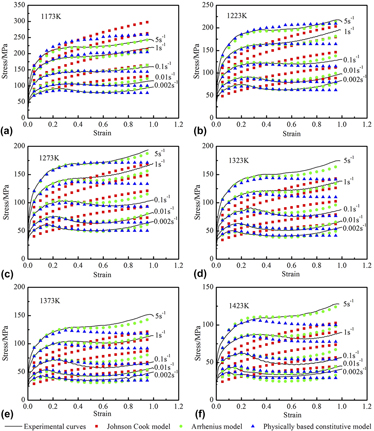Article contents
A comparative study of constitutive models for flow stress behavior of medium carbon Cr–Ni–Mo alloyed steel at elevated temperature
Published online by Cambridge University Press: 11 September 2017
Abstract

A series of hot compression tests of medium carbon Cr–Ni–Mo-alloyed steel, 34CrNiMo steel, were conducted on a Gleeble-1500 thermal mechanical simulator, in a wide temperature range of 1173–1423 K and at a strain rate range of 0.002–5 s−1. Three constitutive models, namely the Johnson–Cook (JC) model, strain compensated Arrhenius model, and the physically based constitutive model, were established to describe the hot deformation of 34CrNiMo steel. A comparative study of the three models was investigated by comparing the accuracy of prediction of flow stress behavior. The results imply that the JC model is not able to adequately represent the high-temperature flow behavior with the existance of recovery and recrystallization. The Arrhenius-type model based on mathematics has a good prediction in the flow stress behavior in all strain ranges during the hot deformation. The physically based constitutive model gives a better prediction accuracy of the deformation behavior in both flow stress and deformation mechanism.
- Type
- Articles
- Information
- Copyright
- Copyright © Materials Research Society 2017
Footnotes
Contributing Editor: Jürgen Eckert
References
REFERENCES
- 12
- Cited by





